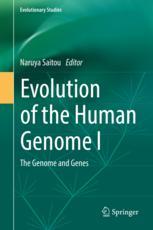

Most ebook files are in PDF format, so you can easily read them using various software such as Foxit Reader or directly on the Google Chrome browser.
Some ebook files are released by publishers in other formats such as .awz, .mobi, .epub, .fb2, etc. You may need to install specific software to read these formats on mobile/PC, such as Calibre.
Please read the tutorial at this link: https://ebookbell.com/faq
We offer FREE conversion to the popular formats you request; however, this may take some time. Therefore, right after payment, please email us, and we will try to provide the service as quickly as possible.
For some exceptional file formats or broken links (if any), please refrain from opening any disputes. Instead, email us first, and we will try to assist within a maximum of 6 hours.
EbookBell Team

4.4
72 reviewsThis book reviews the human genome from an evolutionary perspective. No such book has ever been published before, although there are many books on human genomes. There are two parts in this book: Overview of the Human Genome (Part I) and The Human Genome Viewed through Genes (Part II). In Part I, after a brief review of human evolution and the human genome (by Naruya Saitou), chapters on rubbish or junk DNA (by Dan Graur), GC content heterogeneity (by Satoshi Oota), protein coding and RNA coding genes (by Tadashi Imanishi), duplicated genes (by Takashi Kitano), recombinations (by Montanucci and Bertranpetit), and copy number variations including microsatellites (by Naoko Takezaki) are discussed. Readers can obtain various new insights on the human genome from this part. In Part II, genes in X and Y chromosomes (by Yoko Satta and others), HLA genes (by Timothy A. Jinam), opsin genes (by Shoji Kawamuraand Amanda D. Melin), genes related to phenotypic variations (by Ryosuke Kimura), transcription factors (by Mahoko Takahashi and So Nakagawa), diabetes-related genes (by Ituro Inoue), disease genes in general (by Ituro Inoue and Hirofumi Nakaoka), and microbial genomes (by Chaochun Wei) are discussed. The human genome sequences were determined in 2004, and after more than 10 years we are now beginning to understand the human genome from an evolutionary point of view. This book furnishes readers with a good summary of current research in the field.